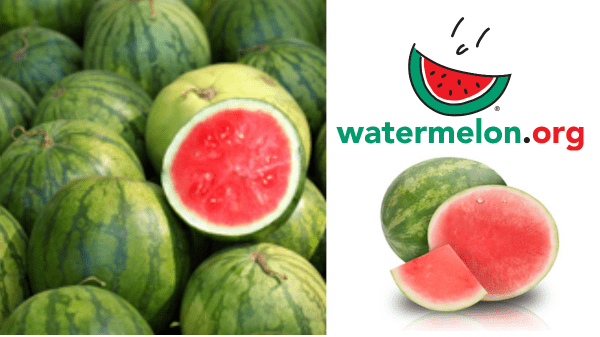CHICAGO – Watermelon is a unique fruit with compounds that may have health effects throughout the body, supporting normal cardiovascular and metabolic health.
According to a new comprehensive review of the scientific literature on watermelon, eating watermelon regularly may help promote health.
This research paper, authored by Britt Burton-Freeman, Ph.D., and colleagues from Illinois Institute of Technology was recently published in the journal Current Atherosclerosis Reports.
“Research is unveiling the health-promoting potential of watermelon. The current literature review provides evidence that watermelon intake and citrulline supplementation lower blood pressure in human trials. Although more research is needed, favorable effects on lipids/lipoprotein metabolism are emerging based on the data we reviewed and reported in preclinical models,” said lead author Burton-Freeman.
According to the research, watermelon contains essential vitamins, minerals, antioxidants and amino acids. It also contains the amino acids citrulline and arginine, which both act as a precursor to nitric oxide, a molecule that plays a role in blood pressure regulation, lipid reduction and glucose control. Polyphenols and carotenoids, particularly lycopene, are also abundant in watermelon. The nitric oxide benefits of citrulline and arginine coupled with the bioactivity of polyphenols and carotenoids found in watermelon suggests that this fruit may support normal cardio-metabolic health.
Burton-Freeman and colleagues reviewed the preclinical and clinical trial evidence published from 2000 to 2020 to assess watermelon intake and citrulline (a signature compound found in watermelon) on cardiovascular and metabolic outcomes, and to identify future directions important for establishing dietary guidance and recommendations. They explored studies related to the whole fruit as well as citrulline supplementation, focusing on key cardio-metabolic risk factors. More research is needed to confirm findings of the studies identified in this literature review.
The investigators concluded that watermelon provides a combination of nutrients and phytochemicals working across multiple mechanisms to induce biological effects. Citrulline and arginine are central to these cardio-metabolic effects, and polyphenols, lycopene, potassium and magnesium contribute as well.
Continued research is needed to determine the level of sufficient intake for clinical outcomes and will also need to be studied in a variety of populations. Research on the whole fruit and its products (i.e., juice) is also needed to help determine the level of sufficient intake. The research identified additional potential benefits from watermelon consumption that warrant further research, such as body weight control (possibly through satiety mechanisms), glucose control, and brain and gut health.
Low fruit intake is one of three dietary factors associated with death from cardiovascular disease (CVD) and type 2 diabetes (T2DM), as are high salt intake and low whole-grain intake. These dietary factors affect people regardless of age, sex and other socio-demographic variables.1 Recent research also shows that eating a variety of fruit helps reduce the risk of T2DM2, while the amount of fruit and the type of fruit selected provide cardiovascular benefits3.
About National Watermelon Promotion Board
The National Watermelon Promotion Board (NWPB), BB #:153670 based in Winter Springs, Florida, was established in 1989 as an agricultural promotion group to promote watermelon in the United States and in various markets abroad. Funded through a self-mandated industry assessment paid by more than 800 watermelon producers, handlers and importers, NWPB mission is to increase consumer demand for watermelon through promotion, research and education programs.
Watermelon packs a nutritious punch, with each serving providing an excellent source of Vitamin C (25% DV), a source of Vitamin B6 (8% DV), and a delicious way to stay hydrated (92% water), with only 80 calories per 2-cup serving. Watermelon consumption per capita in the United States was an estimated 16 pounds in 2020. Watermelon consumption in the United States was approximately 5.3 billion pounds in 2020. The United States exported an additional 359 million pounds of watermelon. For additional information, visit www.watermelon.org.
References
1. Afshin A, Sur PJ, Fay KA, Cornaby L, Ferrara G, Salama JS, et al. Health effects of dietary risks in 195 countries, 1990–2017: a systematic analysis for the Global Burden of Disease Study 2017. Lancet. 2019. https://doi.org/10.1016/S0140-6736(19)30041-8.
2. Cooper AJ, Sharp SJ, Lentjes MAH, Luben RN, Khaw K-T, Wareham NJ, et al. A prospective study of the association between quantity and variety of fruit and vegetable intake and incident type 2 diabetes. Diabetes Care. 2012. https://doi.org/10.1016/S0140-6736(19)30041-8.
3. Bhupathiraju SN, Wedick NM, Pan A, Manson JE, Rexrode KM, Willett WC, et al. Quantity and variety in fruit and vegetable intake and risk of coronary heart disease. Am J Clin Nutr. 2013. https://doi.org/10.3945/ajcn.113.066381
4. Burton-Freeman B, Freeman M, Zhang X, Sandhu A, Edirisinghe I. Watermelon and L-Citrulline in Cardiometabolic Health: A Review of the Evidence 2000-2020



